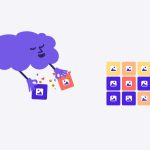Artificial Intelligence (AI) is everywhere—from personal assistants like Siri and Alexa to self-driving cars and advanced medical diagnostics. But how do AI systems actually work? What’s the science behind AI algorithms that enable machines to think, learn, and make decisions?
In this article, we’ll break down the core AI algorithms, explaining how they work and their real-world applications in simple terms.
1. What Are AI Algorithms? 🤔📊
An AI algorithm is a set of mathematical instructions that enables computers to process data, recognize patterns, and make predictions or decisions. AI algorithms mimic human intelligence by learning from experience and improving over time.
These algorithms power various AI systems, including:
✅ Machine Learning (ML) – AI that learns from data.
✅ Deep Learning (DL) – Advanced AI using neural networks.
✅ Natural Language Processing (NLP) – AI that understands human language.
✅ Computer Vision – AI that interprets images and videos.
Now, let’s explore the most important AI algorithms that shape the world around us.
2. Types of AI Algorithms & How They Work ⚙️🔍
AI algorithms are broadly categorized into Supervised Learning, Unsupervised Learning, and Reinforcement Learning.
📌 Supervised Learning (AI That Learns from Labeled Data)
In supervised learning, AI is trained on labeled data (i.e., data with predefined answers). The algorithm learns by mapping inputs (features) to outputs (labels).
🔹 Example Algorithms:
📈 Linear Regression – Predicts numerical values (e.g., house prices based on size).
🌳 Decision Trees – Helps in decision-making (e.g., should a bank approve a loan?).
🧠 Neural Networks – Used in deep learning for image recognition, speech recognition, and more.
📍 Real-World Example:
- Spam filters use supervised learning to classify emails as spam or not spam.
- Medical AI detects diseases like cancer by analyzing labeled medical images.
📌 Unsupervised Learning (AI That Finds Hidden Patterns) 🤯📊
Unlike supervised learning, unsupervised learning works with unlabeled data, identifying hidden patterns and relationships.
🔹 Example Algorithms:
🧩 Clustering (K-Means, DBSCAN) – Groups similar data points (e.g., customer segmentation in marketing).
🕵️ Principal Component Analysis (PCA) – Reduces complex data dimensions while preserving key information (e.g., used in face recognition).
📍 Real-World Example:
- Netflix’s recommendation system groups users with similar tastes to suggest movies.
- AI-powered fraud detection identifies unusual transactions that don’t fit normal spending behavior.
📌 Reinforcement Learning (AI That Learns by Trial & Error) 🎮🤖
Reinforcement learning (RL) is inspired by how humans and animals learn—through rewards and punishments. AI learns by interacting with its environment and improving decisions over time.
🔹 Example Algorithms:
🏆 Q-Learning – AI improves by maximizing future rewards (used in gaming and robotics).
♟️ Deep Q-Networks (DQN) – Combines deep learning with reinforcement learning.
📍 Real-World Example:
- AlphaGo (Google’s AI) defeated human champions in the complex board game Go using reinforcement learning.
- Self-driving cars learn to navigate roads by making real-time decisions based on surroundings.
3. Deep Learning: The Powerhouse of AI 🧠💡
Deep learning is a subset of machine learning that uses Artificial Neural Networks (ANNs)—designed to mimic the human brain.
📌 How Neural Networks Work
Neural networks consist of layers of interconnected nodes (neurons):
🔹 Input Layer – Receives raw data (e.g., an image of a cat).
🔹 Hidden Layers – Process information and detect patterns (e.g., recognizing cat features like whiskers, ears).
🔹 Output Layer – Produces the final result (e.g., “This is a cat”).
📍 Real-World Applications of Deep Learning:
✅ Image Recognition – Facebook’s AI detects faces in photos.
✅ Speech Recognition – Siri, Alexa, and Google Assistant understand spoken words.
✅ Autonomous Vehicles – Tesla uses deep learning for object detection and decision-making.
4. AI in Natural Language Processing (NLP) 🗣️📖
NLP enables AI to understand, process, and generate human language. Some key AI models in NLP include:
🔹 Transformer Models (GPT, BERT, T5)
These models power modern AI chatbots, translators, and search engines.
📍 Examples:
- GPT (like ChatGPT) – Generates human-like text.
- BERT (Google’s AI) – Enhances search results by understanding context.
- T5 (Text-to-Text Transfer Transformer) – Used for text summarization and translation.
Real-World Uses:
✅ Google Search uses NLP to understand complex queries.
✅ Chatbots & Virtual Assistants automate customer support.
✅ AI-generated content (articles, captions, poetry).
5. AI in Computer Vision 👁️📸
Computer vision allows AI to interpret images, videos, and real-world scenes.
🔹 Key Computer Vision Algorithms:
🖼️ Convolutional Neural Networks (CNNs) – Used for image classification and facial recognition.
🚗 YOLO (You Only Look Once) – Real-time object detection (used in self-driving cars).
📍 Real-World Applications:
- Face recognition (Apple Face ID).
- Medical imaging AI detects diseases from X-rays and MRIs.
- Surveillance systems use AI for security monitoring.
6. Challenges & Limitations of AI Algorithms ⚠️🤯
Despite its power, AI has limitations:
❌ Bias in Data – AI can inherit biases from its training data, leading to unfair decisions.
❌ Lack of Explainability – Some AI models (especially deep learning) are like “black boxes” – difficult to interpret.
❌ High Computational Costs – AI requires powerful hardware and massive data for training.
❌ Security Risks – AI systems can be tricked with adversarial attacks (e.g., deepfake manipulation).
To make AI more reliable, researchers are working on Explainable AI (XAI), ethical AI, and bias-reduction techniques.
7. The Future of AI Algorithms 🚀🔮
As AI advances, we can expect:
🌍 More Ethical AI – Bias-reducing techniques and transparent decision-making.
🧠 AI That Thinks Like Humans – Advances in General AI (AGI) to mimic human reasoning.
⚡ Faster & Smarter AI – Quantum computing may revolutionize AI speeds.
🤝 Human-AI Collaboration – AI assisting humans in every industry, from healthcare to finance.
Conclusion 🏆🔬
AI algorithms power everything from social media feeds to self-driving cars. Understanding how AI learns and makes decisions helps us use it responsibly and innovate further.
AI is not just about machines replacing humans—it’s about enhancing our capabilities and unlocking new possibilities.


